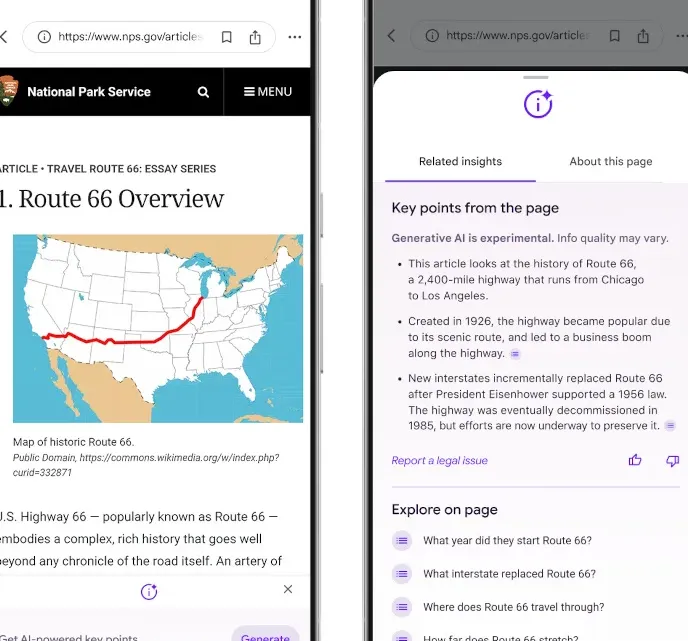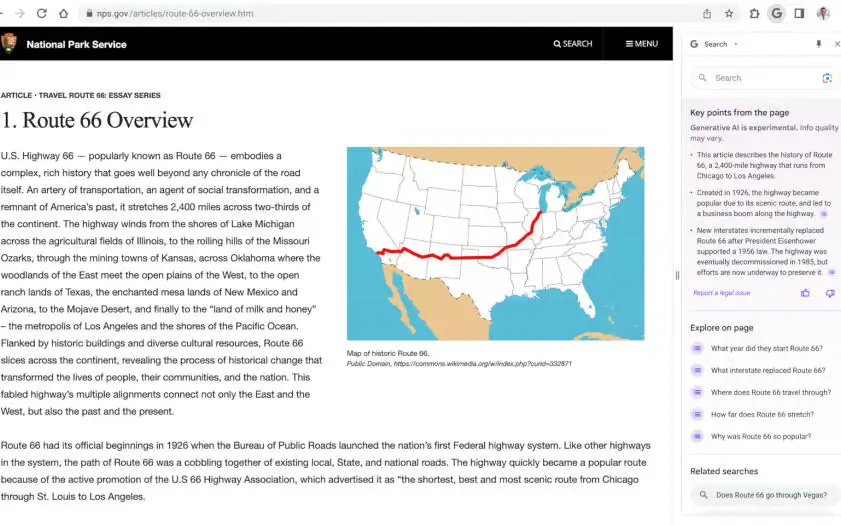Google’s AI Can Now Automatically Summarize Long Web Pages
Google is currently testing a new feature for its generative AI in search, aiming to compete with Microsoft’s AI Copilot in Edge. The company has introduced an early experiment called “SGE while browsing” which expands beyond the search function. This feature utilizes generative AI to quickly generate the most important information from lengthy online content. Google presents it as a tool to simplify the understanding of complex subjects that may require extensive research. However, it is important to note that this tool will not be able to provide key points for articles behind paywalls, but only for freely accessible web pages.
Whenever Google’s AI can generate keypoints for a page you’re visiting, you’ll see an option that says “Get AI-Generated Keypoints” at the bottom of your screen on mobile or in the sidebar on desktop. Each key point links directly to the section of the page it refers to, so you can jump straight to it. There’s also an “Investigate Page” section that shows the questions the article answers. Currently, the feature is only available in the Google app for Android and iOS devices, but it will come to Chrome on the desktop in the coming days. The tool turns on automatically if you’ve already agreed to try SGE, but you can also turn it on as a separate trial in Search Labs. Like any experiment, it can evolve over time based on feedback from testers.

Google is also releasing a new feature soon that can help you become more familiar with new concepts and terms related to STEM, economics, history, and other subjects. More specifically, it enhances AI-generated answers to these topics, so when you hover over specific words, you’ll see previews of the definitions and accompanying charts or images. It can give you a quick way to understand its AI’s answers to your questions without having to delve deep into all the concepts you don’t know.
Finally, if you’re a programmer who isn’t against using AI tools to code, Google has also added new features to SGE that can help you better understand and fix the code it generates. Starting today, elements like keywords, comments, and strings are color-coded and highlighted as code segments in overviews, so you can quickly parse the AI output and determine if it’s working as intended.




